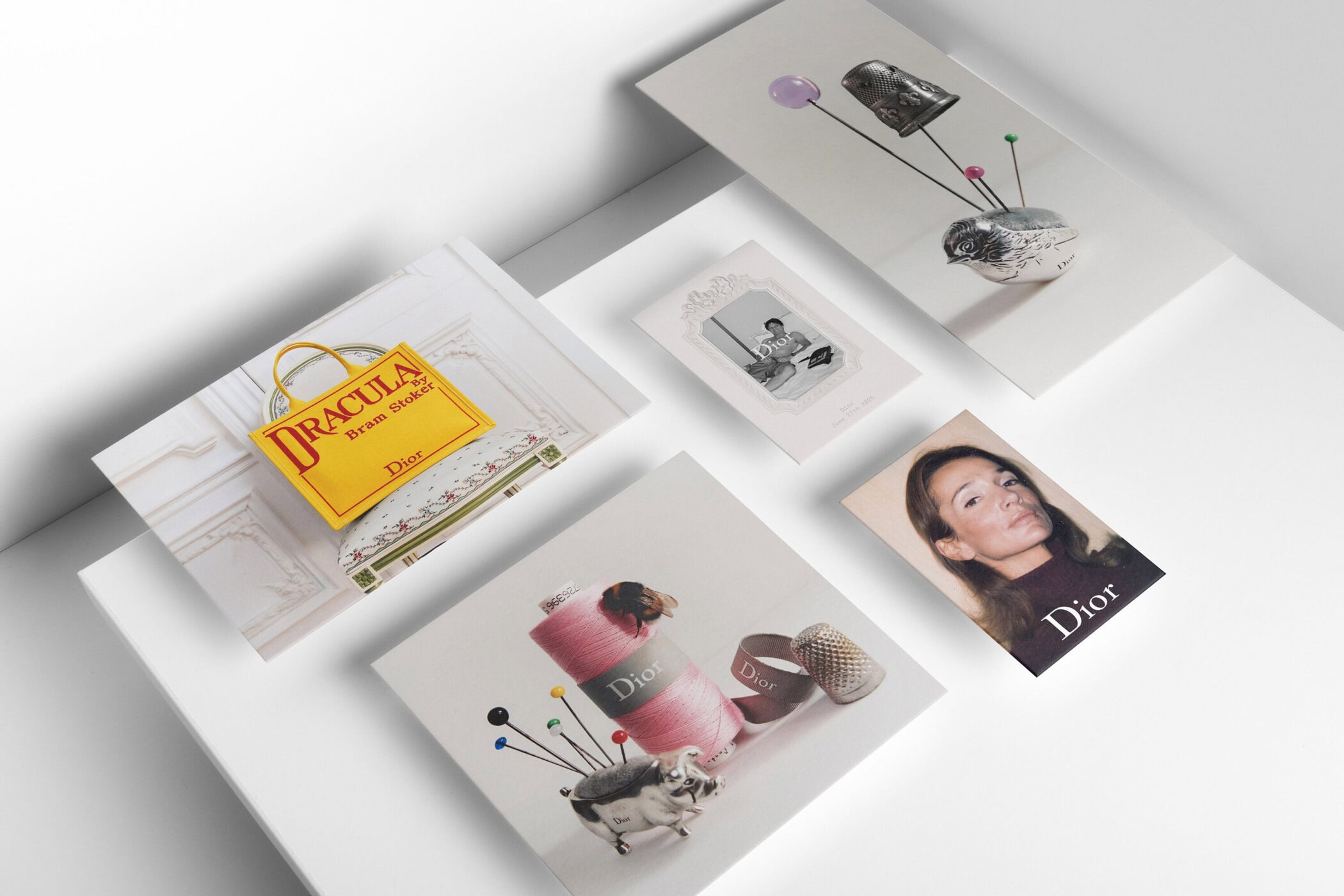What his early moves reveal about the changing language of luxury storytelling — and what’s next for Dior
By Sofia Crawford & Sonya Moore
All eyes are on Dior—yet again. In the lead-up to his highly anticipated Dior Men’s debut on June 27, Jonathan Anderson has been doing something quietly radical: seeding his vision not with garments, but with fragments, creating a soft launch that speaks volumes. While fashion’s typical mode of introduction hinges on high-gloss campaigns or press-heavy presentation, Anderson has chosen a slower, more purposeful path. One built on image, implication, and instinct. There is a shift underway, and it isn’t announced. It’s implied.
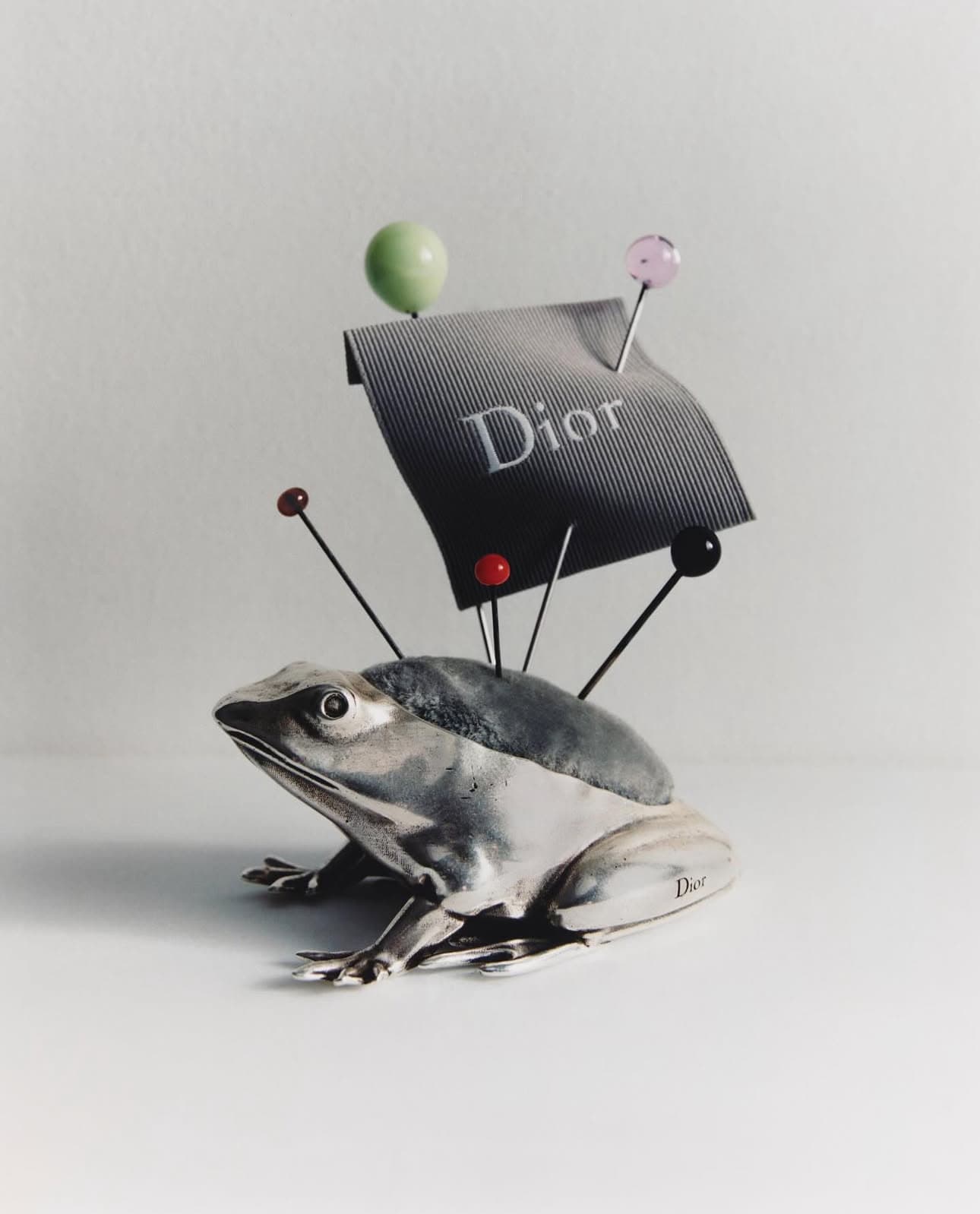
His arrival also comes at a moment of mounting pressure: Dior now contributes over 14% of LVMH’s operating profit, but sales have softened, slipping an estimated 10% this year amid broader luxury slowdowns. In this climate, Anderson’s quiet rollout reads not just as aesthetic restraint, but as a high-stakes recalibration.
In a time when fashion often equates visibility with value, Anderson’s strategy at Dior feels almost countercultural—one that privileges curiosity over immediacy, and meaning over noise. This article looks closely at the early signals he’s shared: not just what they are, but what they suggest about the evolving role of a creative director today. We’re less concerned here with forecasting silhouettes and more interested in how Anderson is reshaping the language around luxury—one that trades spectacle for substance, and delivers resonance without the need for a runway. Through literature, pin cushions, cultural icons, and quiet symbols of craft, a new Dior is beginning to take form—not as a product, but as a point of view.
Key Takeaways
Anderson is shifting the tempo of fashion communication. By leading with mood, reference, and cultural signal rather than product, his approach suggests a longer game—one that builds emotional credibility before commercial momentum.
This isn’t a branding refresh—it’s a brand repositioning. Through highly specific, layered references, Anderson is re-centering Dior as a house of ideas, not just aesthetics. The use of historic symbols, literary titles, and art-world cues reframes the brand as a participant in cultural discourse, not just luxury commerce.
He’s rebalancing power between product and storytelling. In an era driven by immediacy and hype cycles, Anderson’s restraint becomes its own form of distinction. The campaign invites slower looking, deeper interpretation, and sustained engagement—an increasingly rare proposition in the algorithm age.
Visual identity is being used as narrative scaffolding. From the return of the vintage logo to the selection of Mbappé as a quiet but potent icon of modern masculinity, every cue points to a Dior that’s less about reinvention for reinvention’s sake, and more about cultural resonance that deepens over time.
Anderson is not just designing clothes—he’s designing meaning. The result is a Dior that may speak more softly but carries cultural weight. And in a market flooded with sameness, that difference is what builds lasting value.
Crafting Curiosity: Cultural Cues Over Clothing
Instead of unveiling his vision through a traditional campaign or product teaser, Anderson has opted for a slower, more intellectual rollout. His strategy uses fragments—archival imagery, literary references, and visual motifs—to build anticipation through implication rather than revelation. This approach quietly establishes the creative moodboard behind his Dior without showing a single garment, which reframes the debut as a narrative experience rather than a spectacle.
Repositioning the House: Dior as Cultural Institution
Through references like Dracula, Dangerous Liaisons, Edwardian pincushions, and visual nods to figures like Jean-Michel Basquiat and Lee Radziwill, Anderson is anchoring Dior in a world of literature, art, and subcultural aesthetics. The revival of the vintage Dior logo further suggests a house looking inward to reposition its legacy, not just its look. This signals a Dior that’s more about thought than trend—less product-forward, more idea-driven.
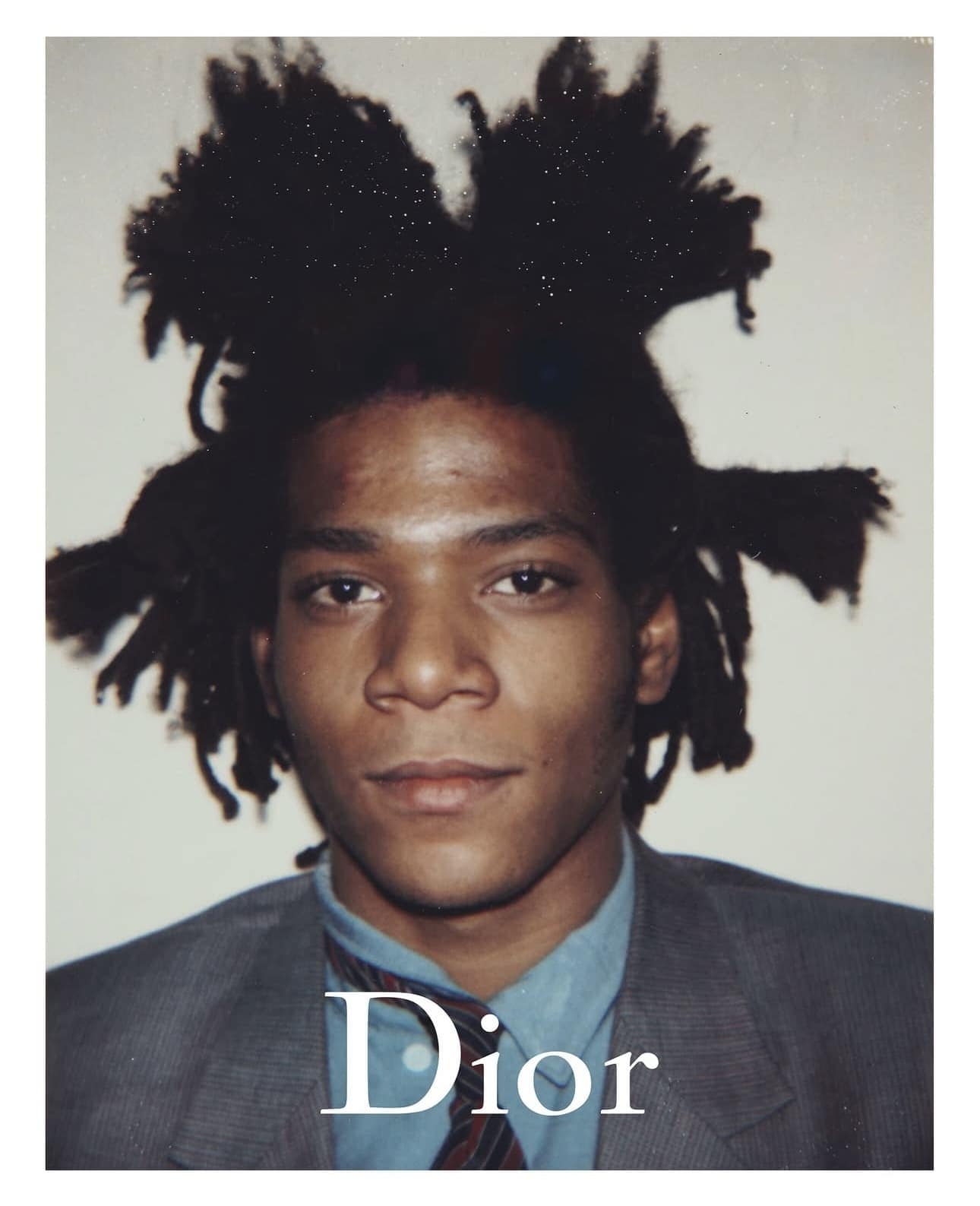
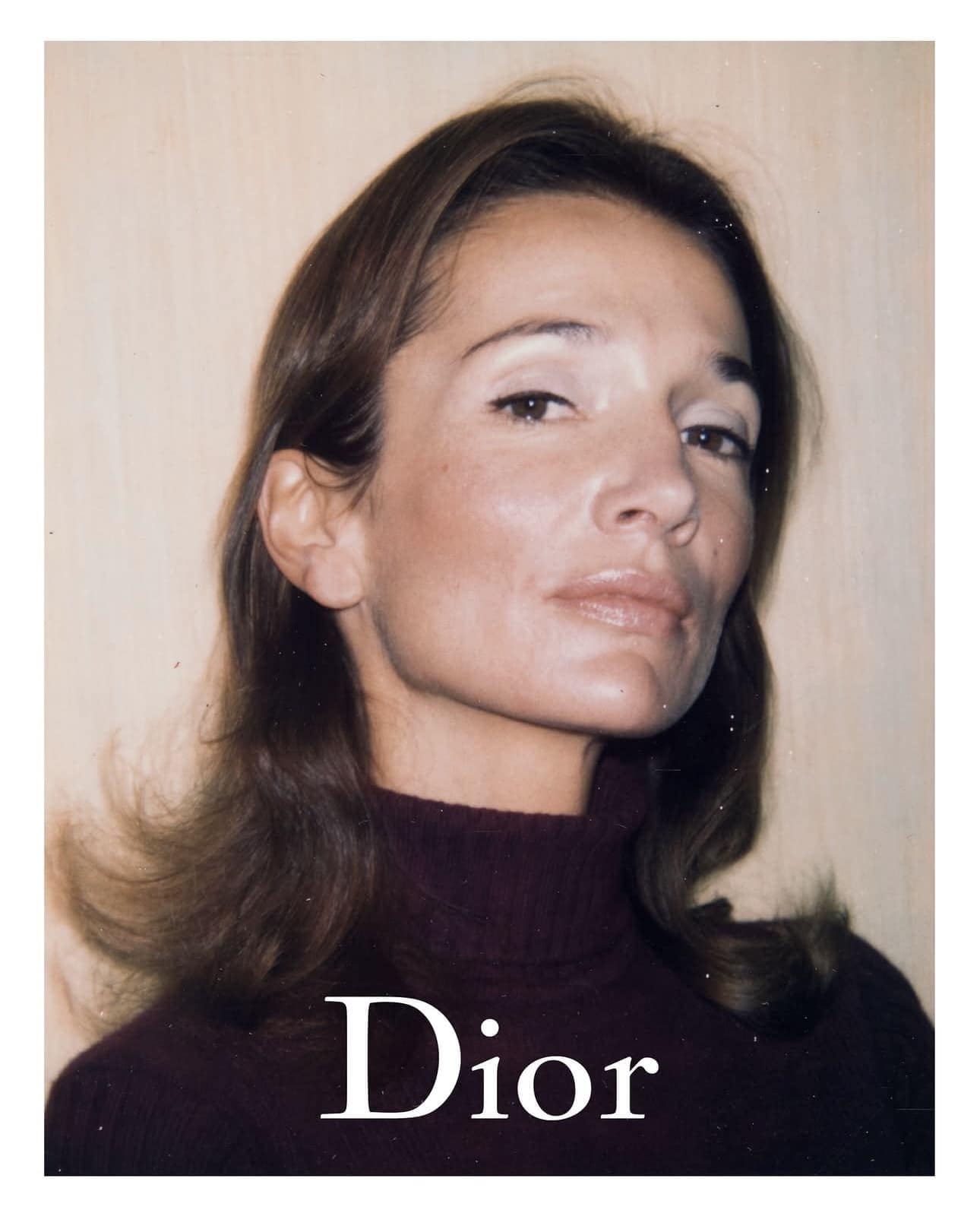
Blending Identity: Personal Authorship Meets Brand Legacy
His campaign with Kylian Mbappé (paired with Schubert, softened bow ties, and subtle tailoring) exemplifies how Anderson is redefining modern masculinity and elegance in quieter, emotionally resonant terms. The use of a global sports icon known for grace and strength adds cultural fluency, while the restrained visuals suggest that Dior under Anderson will embrace emotional subtlety over ostentation. The strategy is clear: to author a vision that is both reverent to Dior’s heritage and radically personal in its delivery.
Anderson’s Aesthetic
Anderson’s creative approach has long favored ideas over immediacy. At Loewe, he constructed a universe where objects and garments lived within the same artistic logic; each collection illustrated a dialogue with art history, domestic craft, or surrealist wit. At Dior, he appears to be applying a similar methodology: establishing a cultural framework before revealing any silhouettes.
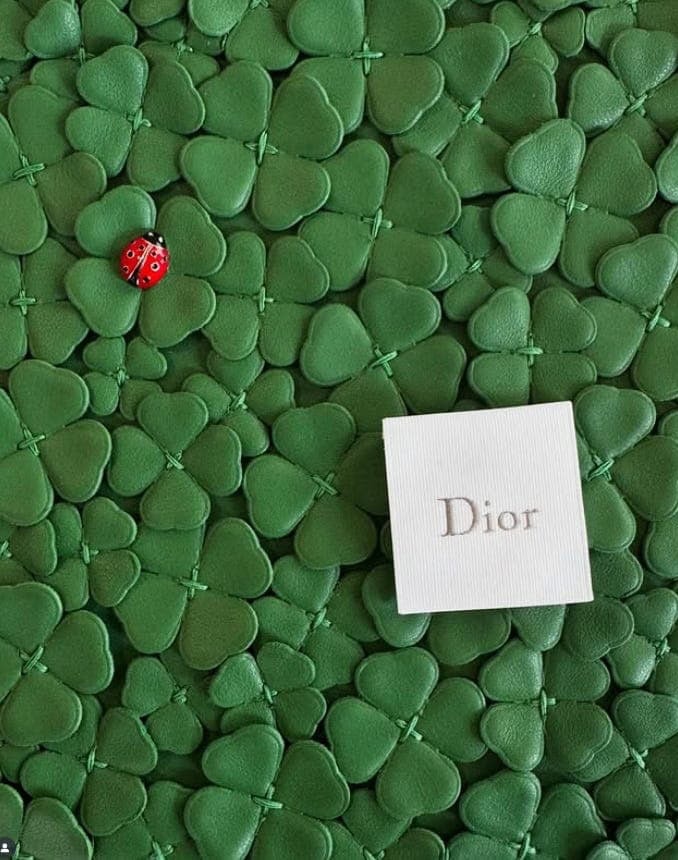
This is less about building anticipation and more about building referential relevance. For Anderson, an entrance and collection doesn’t start on the runway; it starts with the solicitude of discovery.
Instagram as Intellectual Moodboard
Since his appointment, Anderson has used Dior’s digital channels not to promote products but to reveal process. The first visual cues included juxtaposed portraits of Jean-Michel Basquiat and Lee Radziwill—figures who, as Anderson stated, “are both, for me, the epitome of style.” Other references have included annotated Warhol photographs, Edwardian pin cushions resembling animals, and a series of book totes reimagined as literary relics, including one labeled Dracula. Separately, these pieces could permit questioning, but together, these images construct a collage that privileges cultural literacy and furthers legacy with subtle originality.
Notably, the shift to Dior’s vintage logo in these posts is particularly telling: it signals not a return to tradition, but a repositioning of the house within a wider historical and intellectual context.
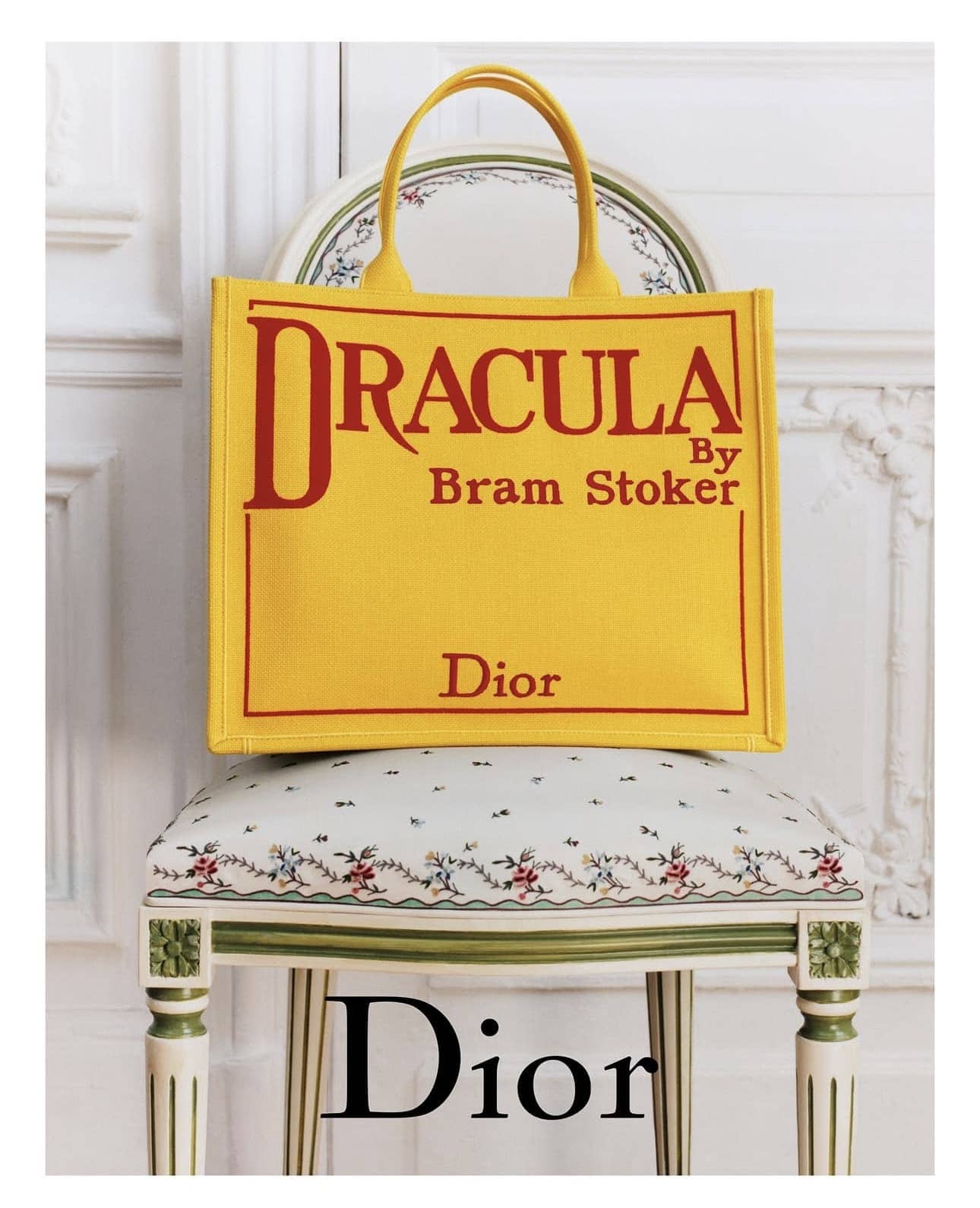

The Role of a Creative Director Today
So the question remains: how does a creative director soft-launch himself? If you’re Jonathan Anderson, it may start with what seem like cryptic Instagram stories that later evolve into posts. It starts with a story rooted in historical references—niche, textured, specific—told in images, ideas, and icons before a single look walks the runway.
To step into Dior is to step into one of fashion’s most scrutinized and storied roles—especially in menswear, where Kim Jones transformed the house into a cornerstone of modern luxury street tailoring. Anderson enters not only as a successor, but as a designer known for subversion, sensitivity, and a deep-rooted curiosity about culture and craft. The task, then, is to find the tension point between what Dior is and what Anderson brings: romantic structure with sculptural wit; French refinement with Irish eccentricity; a legacy brand, filtered through the lens of a designer fluent in cultural dialogue.
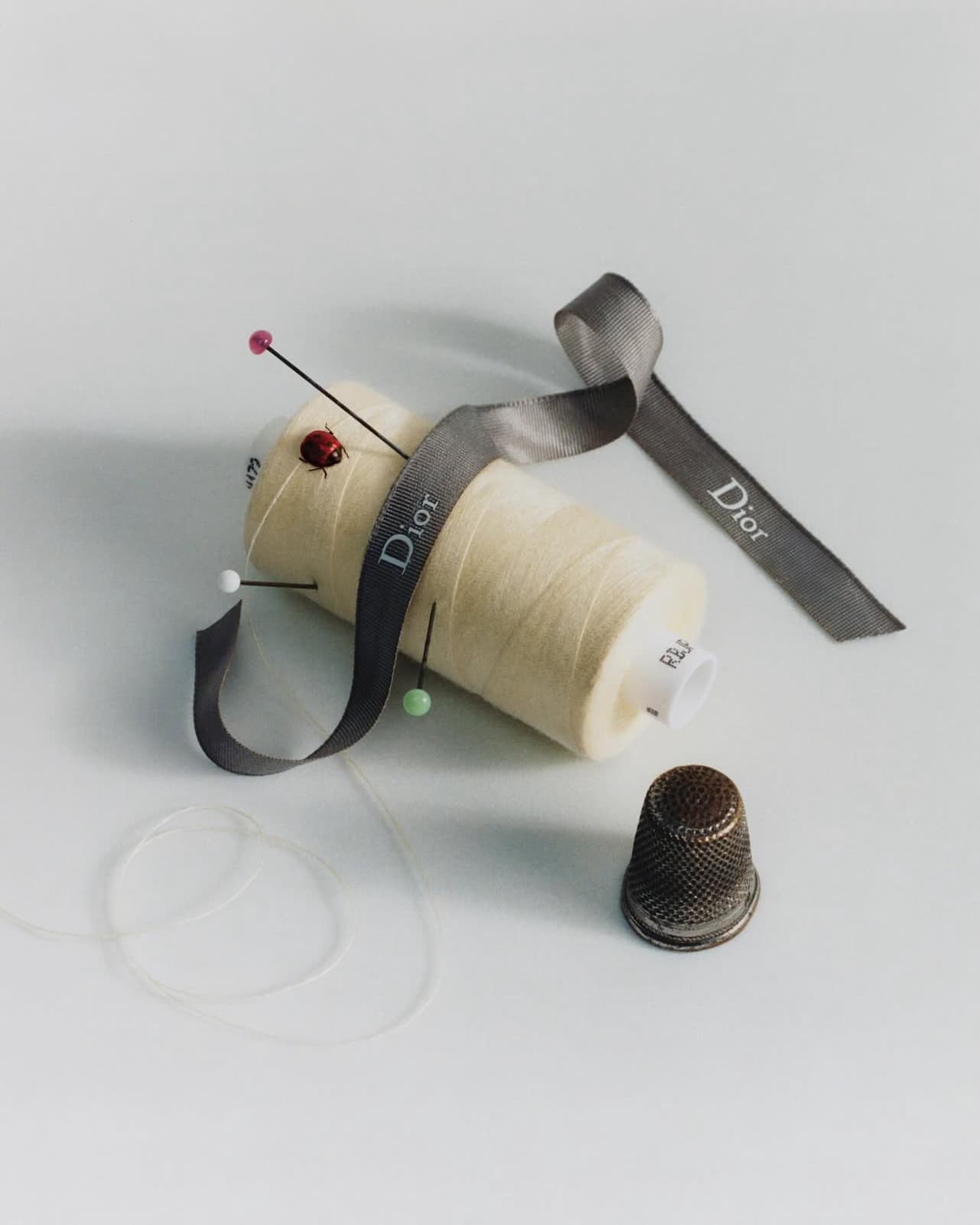
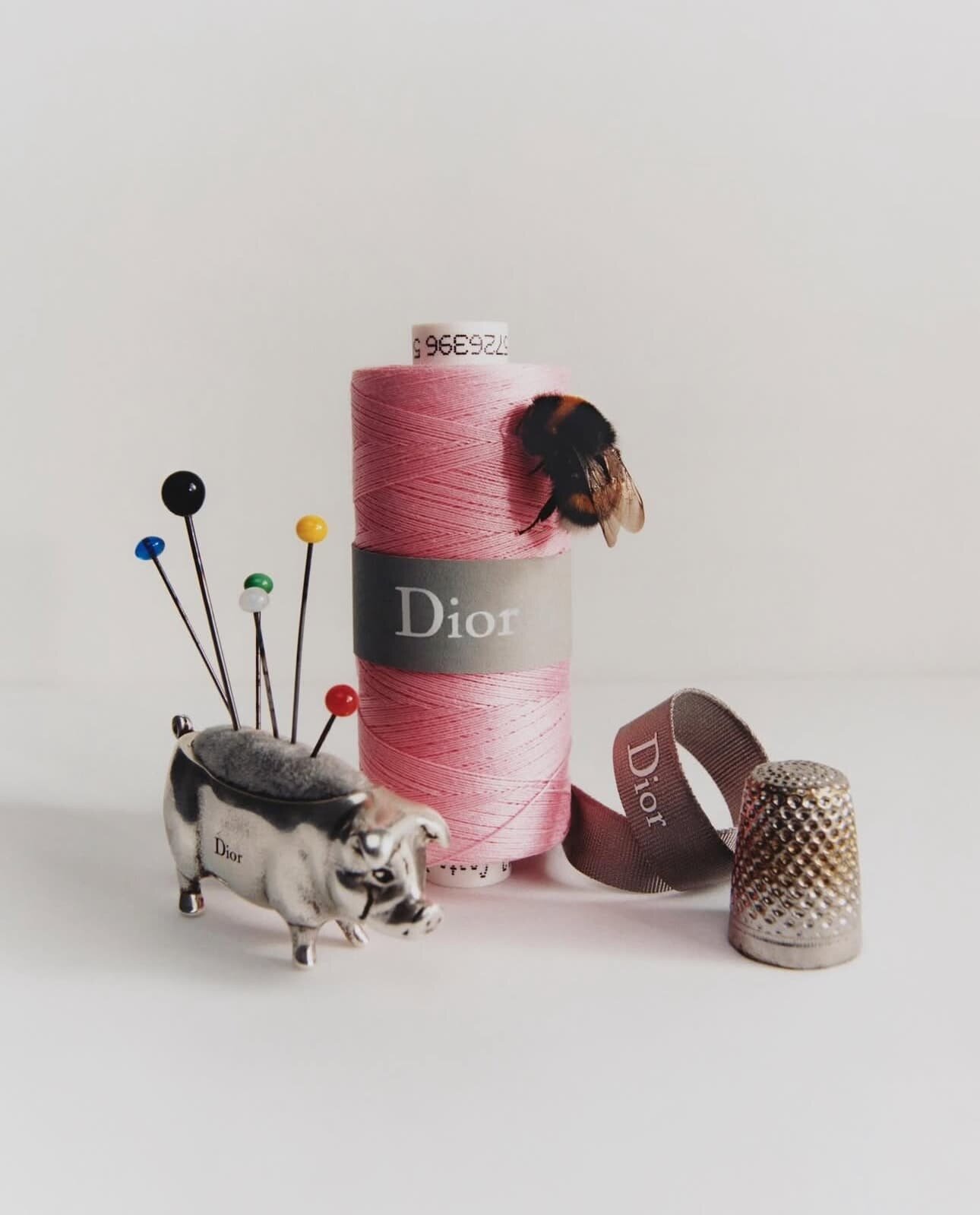
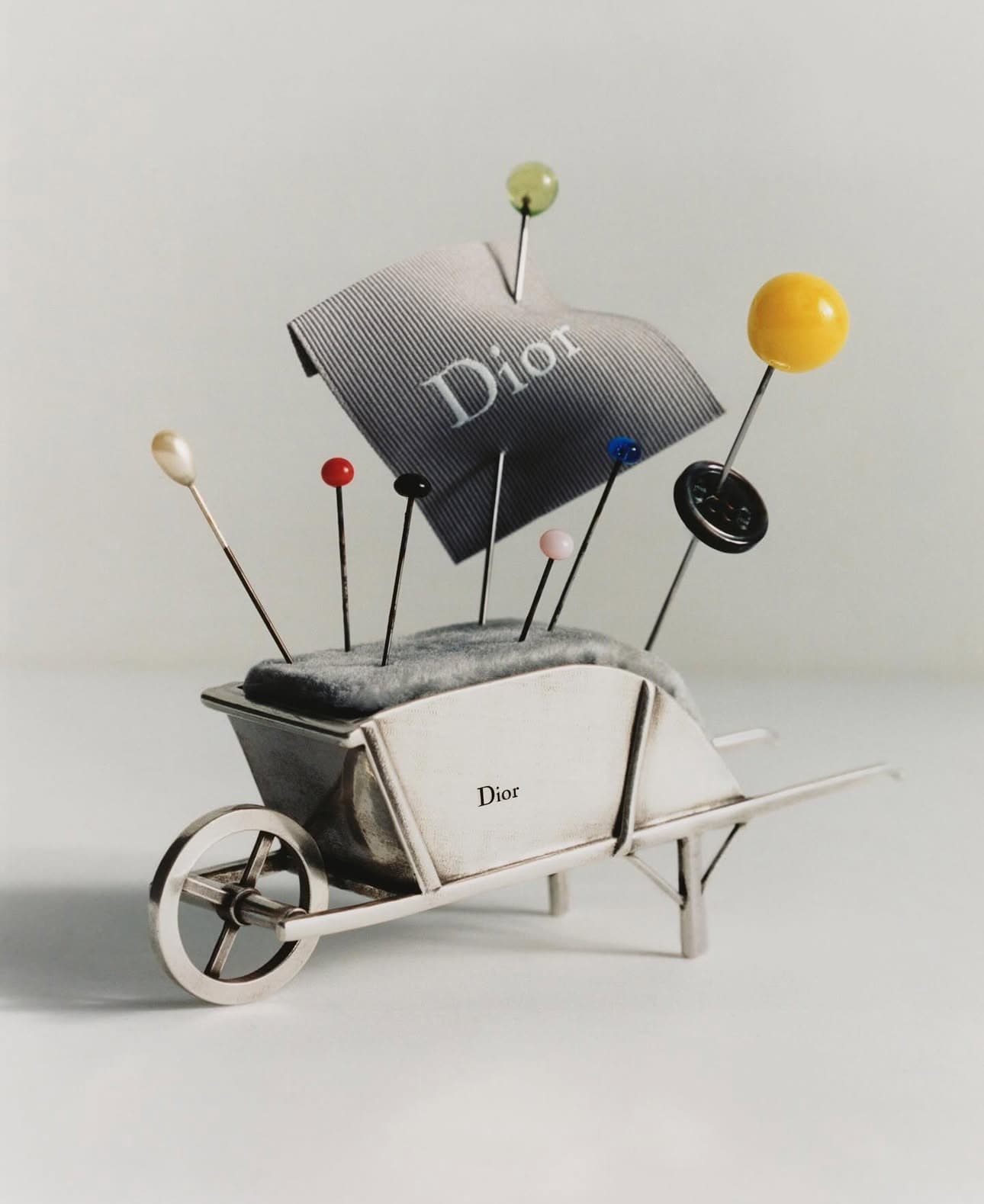
Rewriting Dior’s Voice
Jonathan Anderson has the opportunity to redefine one of fashion’s great maisons for a new generation. He won’t just put his stamp on Dior. He’ll expand the idea of what Dior can be. In the age of algorithmic immediacy, Jonathan Anderson’s entry into Dior feels unusually patient and deeply considered. His soft launch isn’t about virality, but resonance. Through a careful choreography of images, references, and revived logos, he signals what’s to come: not just a new collection, but a re-authored identity. What happens on the runway this June will matter. But what’s already happening between the lines may matter more.
